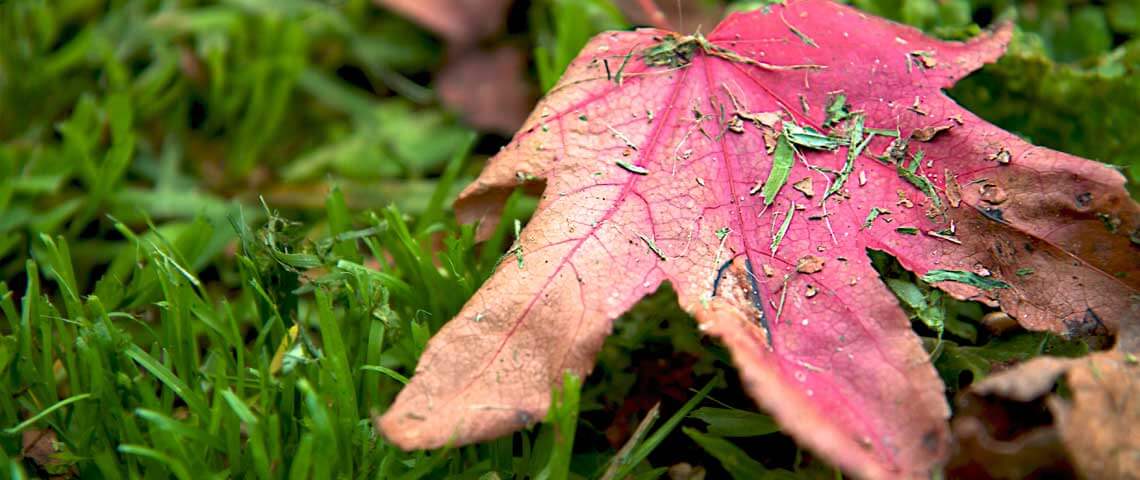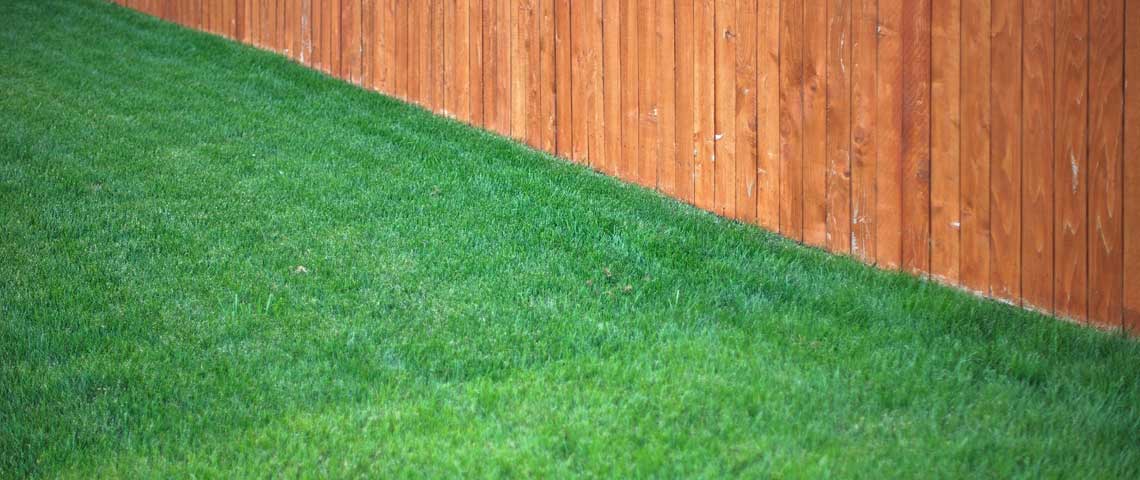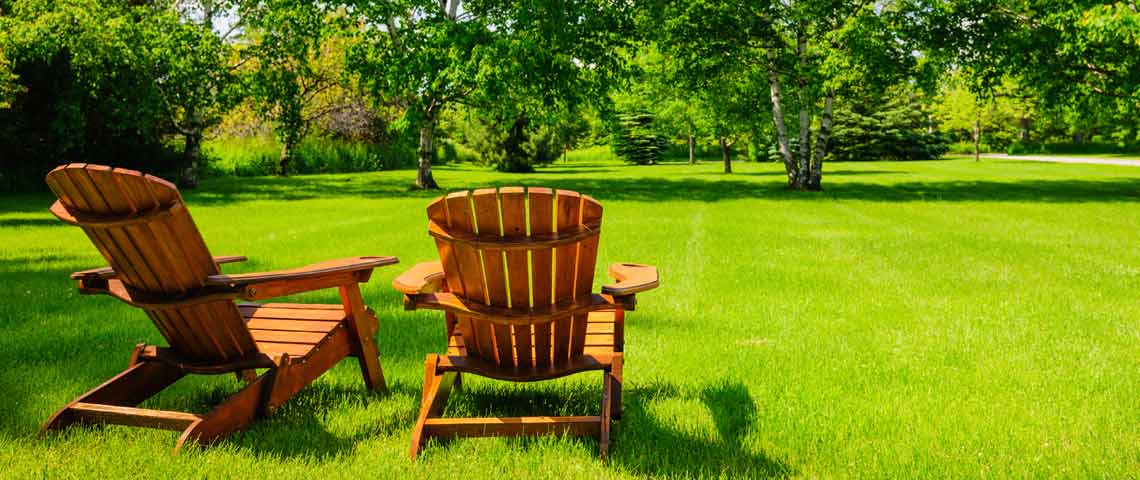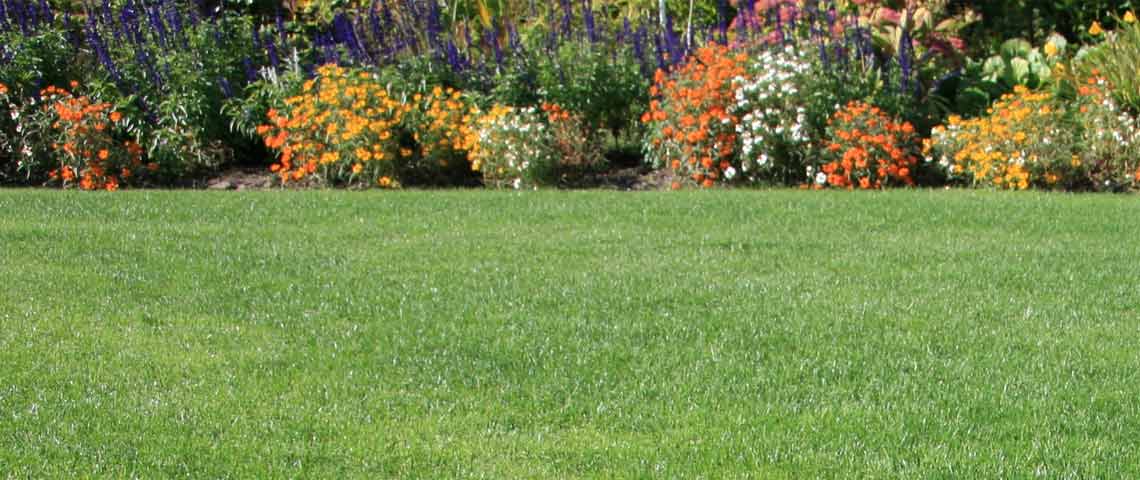Fall Care Tips for Northern and Southern Lawns
One of the primary factors affecting your lawn's spring and summer performance is how you put it to bed the fall before. Timely lawn care helps fall lawns recover from stressful summers, prepare for winter cold, and be ready for vigorous, healthy growth come spring. With these simple fall lawn tasks for northern or southern lawns, you help ensure a beautiful, satisfying lawn next year:

Mow fall lawns slightly shorter than normal to help prevent winter disease.
Fall Tips for Northern Lawns
As northern summers merge with autumn, cooler air temperatures pair with soil still warm from summer sun. That combination creates ideal growing conditions for cool-season lawn grasses such as Kentucky bluegrass, tall fescue and perennial ryegrass. With these common grasses entering their most active growth period, these fall lawn care tasks for northern lawns set your course for success:
- Test your lawn soil, if you're due. Testing every three to four years helps you stay on top of your soil's pH and nutrient needs. Allow six to eight weeks between fertilizing and taking soil samples, so fertilizers don't influence test results. Take separate samples for any problem areas.
- Amend your soil, based on test results. Fall soil amendments prepare lawns for current and future tasks. Lawns with low soil pH may need lime to balance acidity and restore nutrient availability. Heavy, compacted clay soils benefit from gypsum, which helps loosen soil while improving drainage and water penetration.
- Aerate or dethatch cool-season lawns, if needed. Peak grass growth translates to quick recovery from early fall aeration or dethatching. Aggressive spreading grasses, such as Kentucky bluegrass, are prone to thatch buildup. Bunch-forming grasses, such as tall fescue, are not.
- Treat for insect pests. Lawn pest damage shows up in late summer and fall as beetle larvae — from May or June beetles, chafers and Japanese beetles — feed on grass roots. These newly hatched, lawn-destroying grubs are especially vulnerable to treatment while they're small and close to the surface this time of year.
- Overseed thin lawns for thicker, lusher grass next spring. Allow about 45 days between overseeding and your growing region's expected first frost, so grass can germinate and establish well before cold hits. If you're unsure of that date, your local county extension agent can help. Pennington Lawn Booster combines premium seed, fertilizer and soil enhancer in one convenient product so a thicker lawn is easier than ever.
- Plant new lawns. Fall is the best time to plant grass seed in northern lawns. Keep newly seed areas consistently moist as seed sprouts and establishes. Depending on your timing, your first mowing may not come until spring. Improve lawn sustainability with purebred Pennington Smart Seed grasses. Once established, these water-conserving grasses require up to 30 percent less water than ordinary grasses and stay green up to three weeks without watering.
- Fertilize established lawns with high-quality lawn fertilizers at least six weeks before your expected frost date. Fertilizing later in the season promotes tender young growth and inhibits cold hardiness, increasing the risk of winter damage.
- Apply post-emergent herbicides such as weed & feed fertilizers or targeted spot treatments to treat actively growing weeds in established lawns. Avoid using weed & feed products on newly seeded areas; they'll inhibit grass seed along with weeds.
- Keep mowing until your lawn stops growing, with your final mow slightly lower than normal mowing height. This helps prevent winter damage from voles and fungal lawn diseases such as snow mold.
- Gradually reduce watering for established lawns from 1 inch per week to one inch every 10 to 14 days. Water deeply and infrequently, as needed to supplement fall rains.
- Rake and remove fallen leaves to improve light penetration and air circulation to grass. This helps lessen the risk of moisture-related grass diseases.
- Winterize your mower and tools. Fresh fuel, sharp blades and clean lawn tools reduce the risk of damage to equipment and lawn grasses come spring.
- Stop feeding southern lawns six to eight weeks before your first expected frost. For Bermudagrass lawns, allow four to five weeks. A final feeding with a premium lawn fertilizer prepares grass for winter and spring green up, but late fertilizer applications delay dormancy and threaten winter hardiness. If you're unsure of when frost comes to your area, check with your local county extension office.
- Treat for lawn-damaging insects pests. Beetle larvae from Green June beetles, Japanese beetles, chafers and May or June beetles wreak havoc by feeding on grass roots in late summer lawns. Early fall pest treatment catches these newly hatched pests, known as grubs, while they're small and near the surface.
- Reduce supplemental watering on established lawns and let fall rains take over. Water stress can delay spring green up, so water deeply and infrequently a needed. Water Star grass varieties require less water than ordinary grass seed.
- Apply pre-emergent herbicides to established lawns before winter weeds germinate, typically when overnight air temperatures drop near 65 to 70 Fahrenheit. Pre-emergents affect both weed and grass seed, so don't apply them anywhere you plan to seed.
- Test your lawn soil if it's been three or four years since you tested last. Soil sampling identifies your soil's current pH and nutrient needs, and takes the guesswork out of soil amendments.
- Amend your soil, as needed, according to test results. Overly acidic lawns may need lime to restore optimal pH levels, while heavy, compacted clay may need gypsum to loosen soil and improve water penetration and drainage.
- Overseed with cool-season grasses for winter color as warm-season grasses start to turn brown with dormancy. Perennial ryegrass adds temporary green color through winter months. Keep overseeded areas evenly moist while seed germinates and establishes.
- Keep mowing until your grass stops growing. A final mowing, slightly lower than your normal mowing height, prepares your lawn for winter and discourages winter-related lawn disease.
- Remove fallen leaves or mulch them finely. A leaf layer can reduce healthy air circulation, promote excess soil moisture, and encourage some grass diseases.
- Continue to mow, water and fertilize lawns overseeded with cool-season grasses. Maintain a regular lawn care schedule throughout winter months.

Treat tough perennial weeds to prevent spring repeats.
Fall Tips for Southern Lawns
Fall weather signals that it's time for common southern lawn grasses to slow in growth and get winter-ready. Bermudagrass, Zoysia grass and other warm-season lawn grasses prepare to go dormant and turn brown; active growth won't come again until late spring. These fall lawn care tasks for southern lawns lay the foundation for winter success and a beautiful lawn next year:

Keep your lawn free of fallen leaves to help keep grass healthy and disease-free.
By making time for fall lawn care with these simple tasks, you can position your lawn for optimal performance and beauty next year — and enjoy the weather while you do. Pennington is committed to providing you with the finest grass seed and lawn care products possible so you can experience the satisfaction of a lawn you're proud to call your own.
Always read product labels thoroughly and follow instructions.
Pennington with design, Smart Seed and Water Star are registered trademarks of Pennington Seed, Inc.





